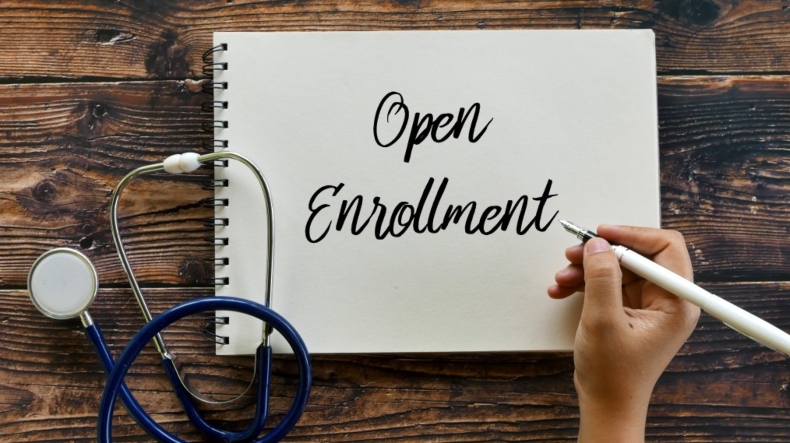The following article was sourced from blog.ifebp.org and written by Kathy Bergstorm on September 7th, 2023.
The arrival of fall signals the start of benefits open enrollment season for many organizations. A 2020 International Foundation survey found that benefits open enrollment periods most often begin in October and November—which means open enrollment starts in just a few weeks for many plans. To gather some tips for a smooth and successful open enrollment process, I talked with Kim A. Buckey, vice president of client services at Optavise. Buckey wrote “Four Key Action Steps to Prepare for Open Enrollment” in the May/June issue of Benefits Magazine.
Buckey offers the following tips to start off on the right foot for this year’s open enrollment.
During open enrollment, it’s especially important for plan participants to understand key terms like premium, deductible and coinsurance so they can select a health care plan that works best for them.
Address health literacy in enrollment communication—and year-round.
“If your employees don’t comprehend the basic terminology and concepts critical to understanding how their coverage works, even the best-laid plans and the most robust benefit package may not be enough to ensure that they are making good decisions about their coverage and about how to use those plans effectively during the year,” Buckey wrote in her article.
“We’re also finding that far too many people are turning to friends and family or just going online to find out benefits information,” Buckey noted in our interview. “Even if the information they get from those sources is technically accurate, it’s not specific to their employer’s plan and their own situation, so it’s probably not the best source for benefits information.”
Health literacy is especially important as organizations strive to limit rising health care costs, and focusing on it through the year will help in that effort, Buckey advised. “Now is a good time to plan your communications for the rest of that year and for what happens after open enrollment—keeping those points in place that plan participants need to understand, including the terminology, the concepts, the processes and how they can best use their plans.”
Learn from experience.
When beginning the planning process for open enrollment, it’s a good idea to look at how last year’s campaign went, such as whether participants made changes last minute, whether they could enroll easily and if the campaign achieved goals for adoption of new programs, etc., Buckey’s article stated.
Those lessons can be used to improve this year’s experience. For example, organizations could add incentives for early enrollment, such as a raffle for gift cards, to cut down on those last-minute changes. If few workers made changes to their benefit elections, organizations might consider an active enrollment process rather than a passive one to “force” them to examine their current coverage.
Communicate early and often.
Buckey’s article suggested that benefits professionals have a year-round plan to educate employees (and their family members) about what plans, programs and resources are available, how their benefit coverage works and what to expect during open enrollment. Communications can cover details like what to expect post-enrollment and what information participants can expect to receive directly from carriers and vendors. For example, workers who are using flexible spending accounts (FSAs) or health savings accounts (HSAs) for the first time should know to be on the lookout for communications and essential materials via mail or email, like member ID cards and debit cards.
Buckey added in the interview that her firm has noticed increased interest among clients in group open enrollment presentations, whether they are held in person and on site or online. “There’s definitely a lot more interest in having the opportunity to do a group presentation and enable participants to ask questions from benefits experts before enrollment actually starts so they can start to get their heads around what’s being offered,” she said.
A 2022 Optavise survey found that 84% of employees surveyed said group or one-on-one sessions with human resources or benefits experts were very or extremely useful.
Assemble the right team.
“Make sure you have the right team, and make sure everybody is on board with the plans that are being introduced and the plan to communicate those new programs,” Buckey said.
The team generally should include the following:
-Brokers, consultants and vendors. During open enrollment, they can assist with communications by creating materials or running educational meetings.
-Enrollment support teams, advocacy and transparency specialists and communications consultants. These team members can support employees as they navigate enrollment and as they use their benefits throughout the year.
–Internal partners such as finance and IT teams. These team members will ensure that budgeting needs are met and technology is up to date.
Offer one-on-one support to bolster enrollment in point solutions and voluntary benefits.
A growing number of plans are offering point solutions such as coverage for infertility as well as programs focused on musculoskeletal (MSK) or gastrointestinal care, Buckey noted in the interview. “We’re also seeing more on the voluntary (employee-pay-all) benefits front, including an uptick in the offering of long-term care insurance—either hybrid or standalone programs,” she said.
“One thing we have found is that when employers focus on open enrollment support either telephonic or in person, participants are far more likely to sign up for voluntary programs because they have someone who can explain their benefits to them,” she added.
Want to get in touch with Salus Group? Fill out the form below.


